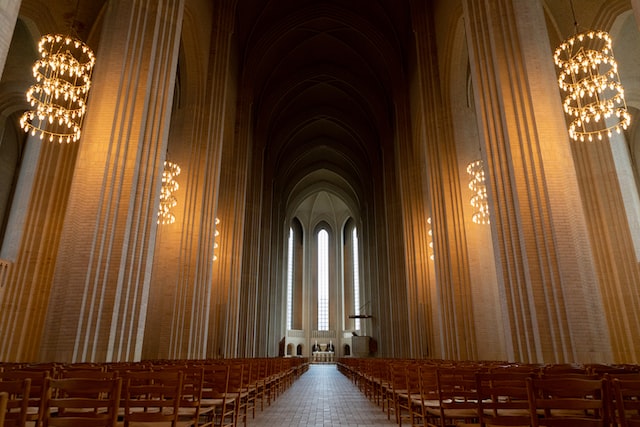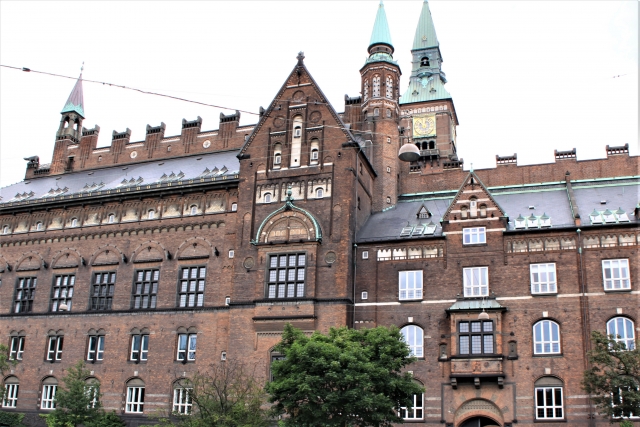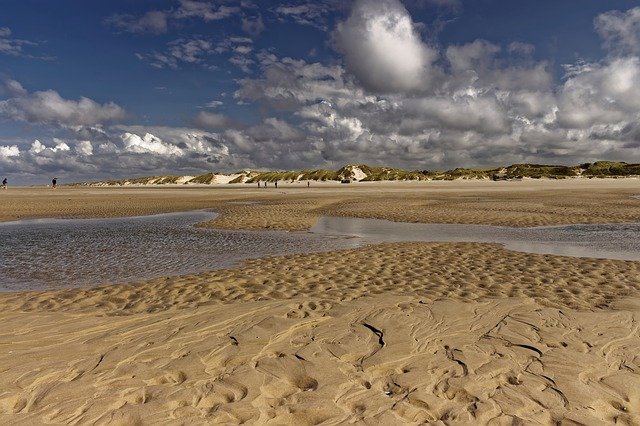Frederiksborg Castle: A beautiful castle by a lake in Denmark
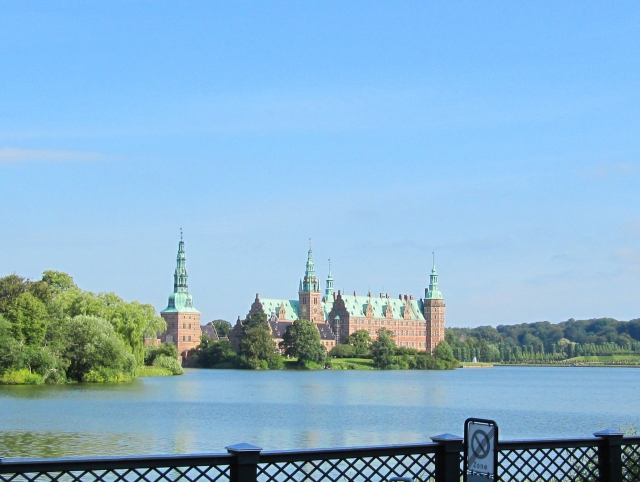
There is a castle in Denmark called Frederiksborg Castle. It is unique because it is built on three islands in Lake Slotsø. Combined with its majestic appearance, Frederiksborg Castle has a mysterious atmosphere as if it were built on a lake.
The castle has an interesting history, having been rebuilt by two generations of Danish kings, or unfortunately suffered a fire, but has since been successfully restored.
In this article, I would like to introduce Frederiksborg Castle.
What is Frederiksborg Castle?
Frederiksborg Castle is the largest ancient Renaissance castle in Nordic countries. It is located in Hillerød in North Zealand, about 30 km north of Copenhagen.
Frederiksborg Castle is a Danish landmark as a very atmospheric castle built on three small islands in Slotsø. It is built in the same Renaissance style as the Palace of Versailles in France. It has a gorgeous and massive red-brick exterior.
Background to Completion
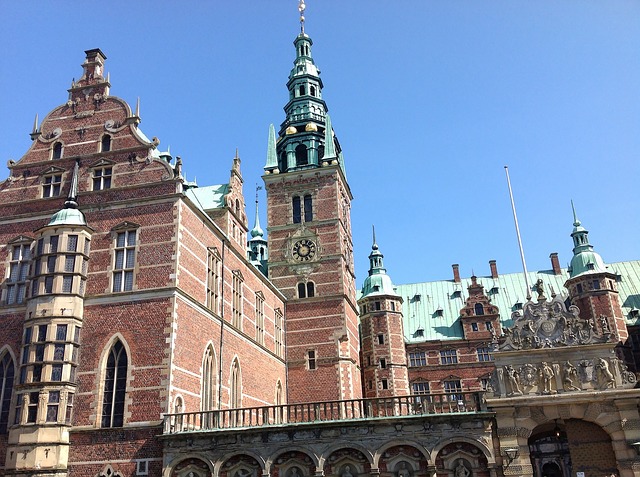
Frederiksborg Castle, from which the castle takes its name, was built in 1560 by King Frederiks II of Denmark. Although Frederiks II planned the castle, Christian IV built most of what is now Frederiksborg Castle.
Christian IV was the next king of Denmark, succeeded by his father, Frederiks II. Christian IV was also born in Frederiksborg Castle in 1577. He may have had a personal attachment to the castle. Christian IV worked with the Dutch architects Lorenz van Steenwinckel and Hans van Steenwinckel in the early 17th century.
They completed Frederiksborg Castle for 18 years, from 1602 to 1620. Frederiksborg Castle served as the King of Denmark’s residence after Christian IV’s death. It played an essential role as a coronation site from 1671 to 1840.
As a side note, when Frederiksborg Castle was built, Christian IV was very fond of the Dutch style. He again commissioned architects to build a summer palace in Copenhagen, Denmark. This palace is Rosenborg Castle.
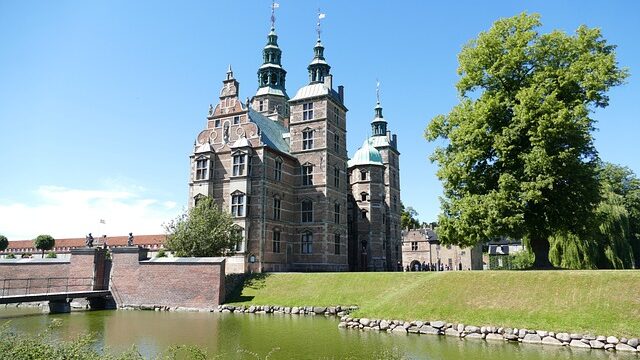
Opened as the National Museum of History
Frederiksborg Castle is open to the public as the National History Museum. The museum houses and exhibits furnishings and artifacts that belonged to the Danish royal family from 1877 to the present.
The Danish king’s castle was transformed into a museum after a fire in 1859. The fire destroyed most of the castle’s interior. Afterward, the king and the entire province collected donations to rebuild the castle. J. C. Jacobsen, the founder of the world-famous Denmark-based beer company Carls Brewery, also contributed a large sum of money to help the brewery recover from the fire.
Thus, thanks to donations from all over the world, the museum recovered from the devastation of the fire in 1877, 18 years after the unfortunate blaze. The museum was reopened as the National Museum of History.
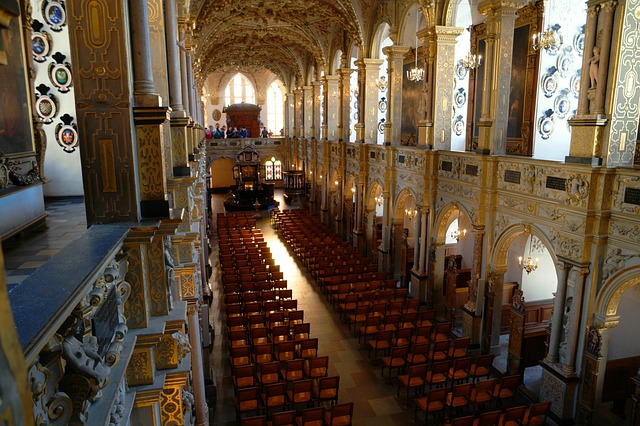
On the second floor of Frederiksborg Castle, there is also a church built by the court architect in the reign of Christian V. The church was largely undamaged by the fire of 1859.As a result, the church’s interior remains as it was built. This church was initially reserved for royalty.
Today it is also used as a venue for annual music concerts. Every Thursday from 1:30 to 2:00 p.m., the church hosts a performance by three organs, the oldest of which dates back to 1610.
Places of interest outside the castle
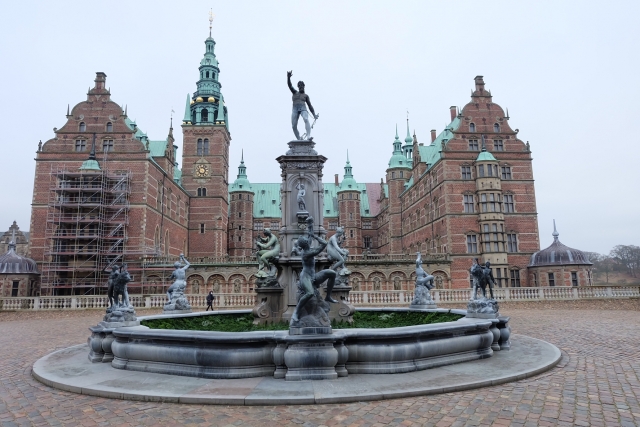
The beautifully landscaped surroundings of the castle, including gardens and lakes, are also a highlight. After passing through the main castle gate, there is a courtyard.
In the center of it stands a fountain and a bronze statue of Neptune to welcome visitors. The statue of Neptune is a replica. The real one is located in the courtyard of Drottningholm Palace in Sweden. Originally the statue was owned by Denmark. However, it was moved to Sweden in 1659, during the Northern War, where it remains.
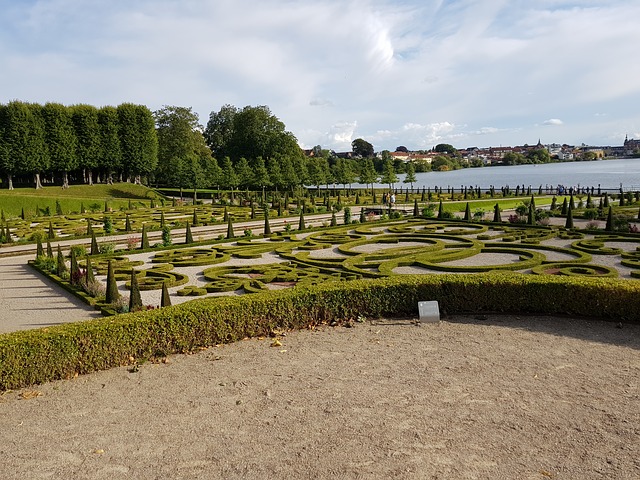
In the gardens of Frederiksborg Castle, visitors can admire a landscape based on French gardens. The baroque garden was designed in the 1700s and reconstructed in recent years. The garden depicts a unique design reminiscent of the crest of a royal crown. The garden is so beautiful that visitors are drawn to it.
Conclusion
Frederiksborg Castle is the largest Renaissance-style castle in Nordic countries, with a history dating back to the 16th century. It was built by Frederiks II and his son Christian IV, father and son, for two generations.
It still stands peacefully on the lake and watches over the city of Denmark. The castle was once destroyed by fire but was successfully restored as the Exposition Hall. It is a must-see spot when touring Denmark.

